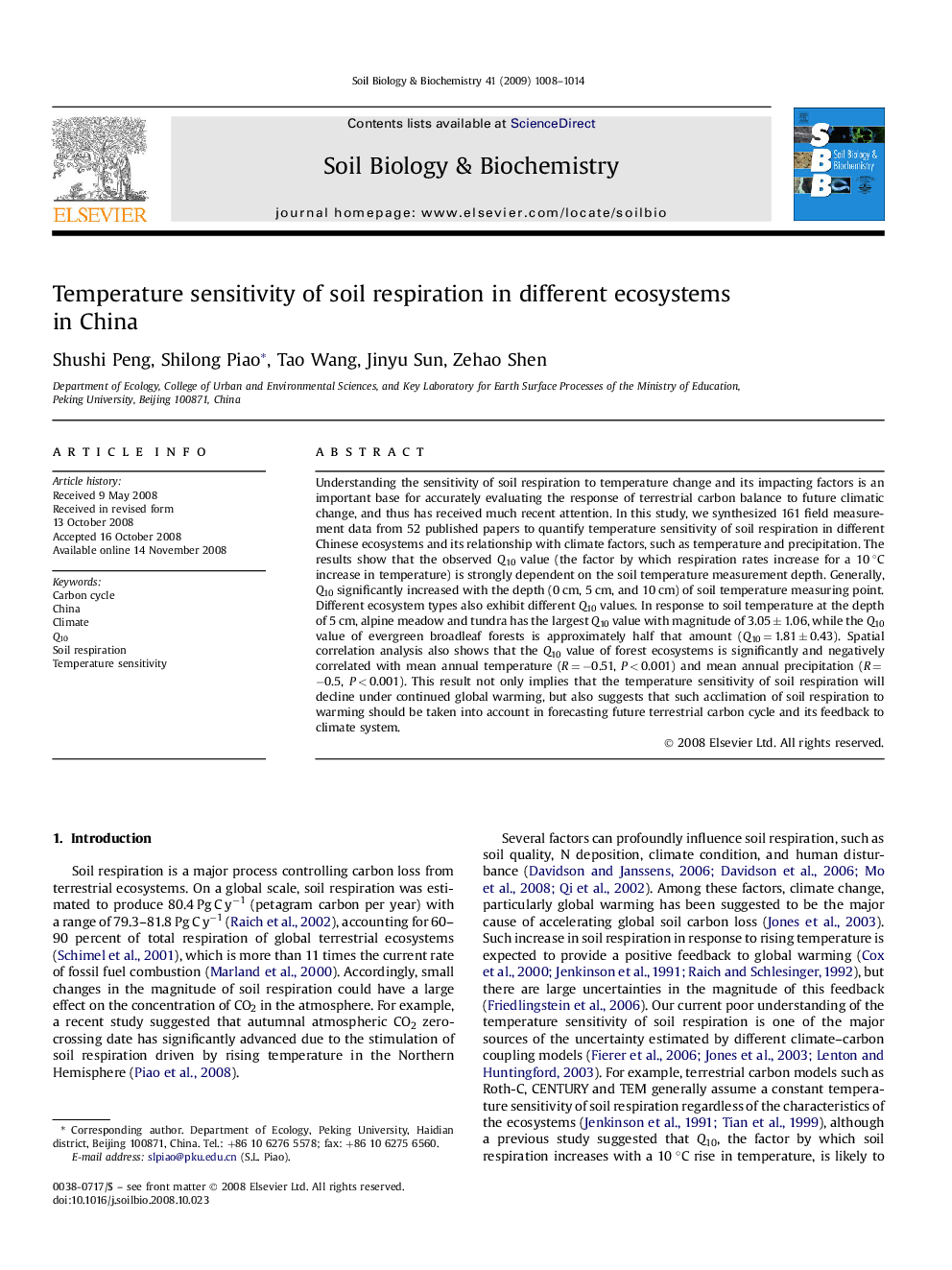| Article ID | Journal | Published Year | Pages | File Type |
|---|---|---|---|---|
| 2025766 | Soil Biology and Biochemistry | 2009 | 7 Pages |
Understanding the sensitivity of soil respiration to temperature change and its impacting factors is an important base for accurately evaluating the response of terrestrial carbon balance to future climatic change, and thus has received much recent attention. In this study, we synthesized 161 field measurement data from 52 published papers to quantify temperature sensitivity of soil respiration in different Chinese ecosystems and its relationship with climate factors, such as temperature and precipitation. The results show that the observed Q10 value (the factor by which respiration rates increase for a 10 °C increase in temperature) is strongly dependent on the soil temperature measurement depth. Generally, Q10 significantly increased with the depth (0 cm, 5 cm, and 10 cm) of soil temperature measuring point. Different ecosystem types also exhibit different Q10 values. In response to soil temperature at the depth of 5 cm, alpine meadow and tundra has the largest Q10 value with magnitude of 3.05 ± 1.06, while the Q10 value of evergreen broadleaf forests is approximately half that amount (Q10 = 1.81 ± 0.43). Spatial correlation analysis also shows that the Q10 value of forest ecosystems is significantly and negatively correlated with mean annual temperature (R = −0.51, P < 0.001) and mean annual precipitation (R = −0.5, P < 0.001). This result not only implies that the temperature sensitivity of soil respiration will decline under continued global warming, but also suggests that such acclimation of soil respiration to warming should be taken into account in forecasting future terrestrial carbon cycle and its feedback to climate system.
